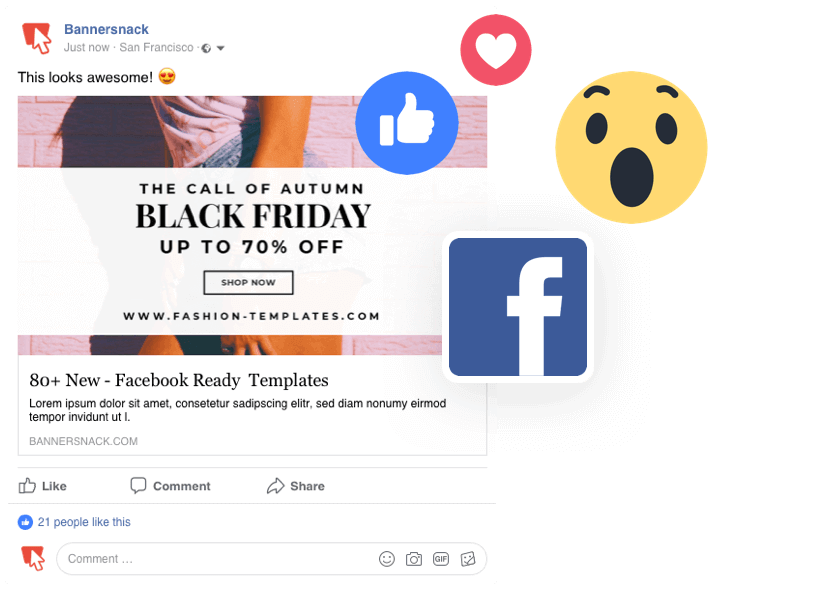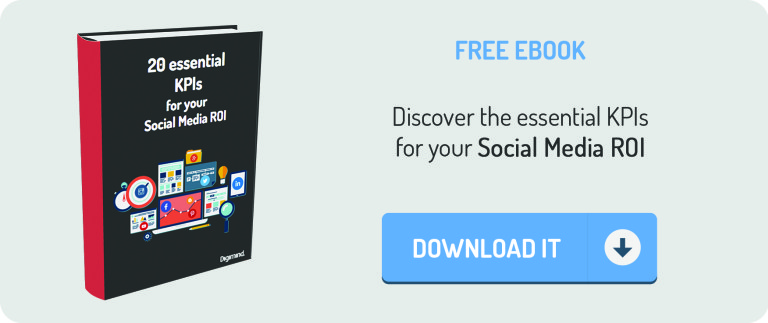What is remarketing?
A recent study by Page Fair showed that over 615 million devices now run adblock. This confirms a wide spread misconception that consumers despise adverts on websites they visit. Hubspot, inbound marketing specialists, also just published a study which made a rather convincing counter argument.
Hubspot found that customers actually do not mind ads – it doesn’t really get in the way of those wanting to just visit the hosting website and in some cases it can actually improve the customers experience. 77% of the people surveyed reported that they personally would prefer a software solution which filters ads rather than suppress. Why? Because ads which are relevant to their needs are valuable and improve their online experiences and provide real tangible value.
Remarketing is an excellent way to increase advert relevance and show adverts based on customer behavior so the viewer is assured to have a high level of interest in the product or service showcased in your adverts. Knowing what remarketing is and how to implement it can help you increase interaction rates, conversion rates and with over 73% of internet users aged at least 14 will buy something online this year. Remarketing ensures you have an opportunity to have your share of the pie.
Nearly 3/5 of online buyers indicated that they noticed ads appearing during general internet browsing of products they had previously expressed interest in, according to a report by Adroit Digital. This means that engaging consumers through remarketing ads catches the attention of consumers.
However and unfortunately, not many businesses exploit remarketing. According to numerous reports only about 46% of professionals who work in online search marketing believe that remarketing does not get leveraged by brands as often as it should.
If you want to get a better understanding of remarketing, continue reading to dig a little deeper.
What is remarketing and what does it do?
Depending on who you ask, remarketing can be incredibly complex or incredibly simple.
Remarketing at its core offers a way for you to target your adverts towards those who have visited your website or expressed interest in your product/service. It offers you with an opportunity to re-engage with potential customers who may have spent time reviewing one of your product pages but just didn’t follow through with a conversion/purchase.
A well consingle-imaged remarketing program will enable you to keep a record of the customers who visit your website and how long they spent looking at each individual page. Noticing that customer A looked at the page for Product B, you can then show an advert showcasing the virtues of Product B to customer A. The adverts will follow customer A as they browse other websites for a set period of time.
The resulting adverts are highly relevant and actually quite cheap because you’re showing an advert to someone who is actively looking for it and you’ve already done the hard work of attracting them to your website and so the cost of pulling them back in is far cheaper.
According to AdRoll, only 2% of consumers will convert the first time they visit a website. This makes remarketing an explosively powerful tools to draw back first time visitors and increase the likelihood of generating a conversion.
With the increase in interest that remarketing ads provide, it’s clear why remarketing can be so effective. Kimberly-Clark reports that as much as 50-60% higher conversion rates for those who receive retargeting ads. A further study by Digital Remedy discovered that general ad response went up by as much as 400%. Additionally, ComScore reports that retargeted ads can increase the rate of branded search by as much as 1,046%.
Remarketing offers businesses the method needed to create an improved ad experience. A well-structured campaign can tap into the interests of their customers and display the right content which holds the most likelihood of generating a conversion.
What is remarketing? All of the different types available
Remarketing is full of variety and there are many ways businesses can use remarketing to engage their customers online. Businesses can select the best way of using remarketing from the options available. Here are some of the most popular ones.
Remarketing Option 1: Ad displays for people who have visited your business website
Is the most popular option available – it enables you to show adverts to visitors who show certain behaviors during their visit. These ads can appear in two main types of platforms.
Setting up remarketing campaigns through Google Ads will have their remarketing ads appear throughout the GDN (Google Display Network). Google Ads is the largest platform for PPC in the world and establishing your remarketing adverts through it gives you the largest possibility of getting your advert in-front of the widest audience.
You can also setup these types of ads on social media platforms. Facebook, Twitter and Instagram all offer their own display platforms. Facebook alone reaches over a billion people around the world and provides a great opportunity for remarketing.

Remarketing Option 2: Email Remarketing
Email remarketing is a valuable tool if you currently or plan to collect emails from potential leads and/or customers. For example, you can create ad campaigns which are shown to recipients who open your email or to those who click one of the call-to-actions (CTA).
As they’ve opened your email or performed another type of activity, you know that they have an interest in your offering and if they clicked on a specific link for a specific product, you know which product they’re interested in. The great part about this is that if you are also using your emails to pull leads onto your website, you can also apply other remarketing campaigns (from Option 1, above) giving you multiple opportunities with the same visitor/lead.
Remarketing Option 3: Remarketing list search ads
Outside of displays ads on other websites (like Option 1 & 2) remarketing also allows you to display ads on the search engines themselves. These types of remarketing ads will give you the chance to target those who have recently visited your business website and who are searching for certain relevant terms online. Between these two criteria, you can find potential customers who will the most interested in learning more about your company with an extremely high degree of accuracy.
Remarketing Option 4: Search retargeting
This is a fairly unique option for enacting remarketing. With Search retargeting, you can find customers who have searched for relevant terms and then looked at products which are similar to your own offerings but the key here is that they haven’t visited your website yet.
This particular form of retargeting allows you to broaden your reach. You will be able to specifically target those interested in your competitors. You can let them know precisely why they should give your organization a try.
Remarketing Option 5: Video remarketing
Video remarketing is probably the simplest option and is a method of showing your remarketing adverts on YouTube. Those who have visited your channel or your videos can be retargeted through ads while they browse elsewhere on the Google Display Network.
What is remarketing? The key to building a successful campaign.
By now, you’ll have a pretty clear understanding of what remarketing is and how you can apply it in order to build an effective campaign.
Below are 6 steps to help you start and execute an impactful campaign.
Setting up Remarketing: Step 1
Define the pages which you want to ‘tag’ and segment your campaign.
The first step anyone should make when setting up a remarketing campaign is to decide which pages you want to tag. A good quality remarketing campaign will identify high-value pages – these are pages which showcase a specific product, service or require a valuable action such as a quotation page or contact us page. These pages will offer the best indicators that the visitors who find them will have a higher purchase intent eg. Visitors will be actively seeking out the products these pages talk about.
When you select these valuable pages, you will want to compare them with the pages visited within your customers sales funnel or sales journey. If these pages are some of the last pages which are visited by customers just before they purchase, it’s a clear indication that these will capture the attention of high-intent shoppers. Those who are seeking to purchase things rather than just kick-tires of evaluate.
Not only will customers who visited these types of high-intent pages respond more favorably to your remarketing ads but it will also be far easier to identify the products or services they are specifically interested in. Rather than just using remarketing to show them adverts talking generally about your business, you can show them adverts for products they have an interest in buying (shown through their previous online behavior).
For example, businesses may want to bid more on their shopping cart abandons or conversion pages that were interrupted. There might be visitors who had visited your product page and then visited your quotations page who then vanished. These pages linked with these types of behaviors can provide more value than simply targeting a specific page. By layering behaviors/characteristics of the visitors website visit together, you can increase your adverts accuracy/relevancy and get a better result.
Setting up Remarketing: Step 2
Think about offering special discounts and deals for your retargeted consumers.
Within your marketing campaign, you’ll want to offer ads that help to get to the core of why the visitors didn’t complete a purchase or submit an enquiry the first time they visited. Offering relevant coupons or special deals can be an excellent way to bring back these visitors for you to have another turn at converting them.
Discounts and deals which relate directly to those who had already visited certain product pages will entice people. It will get them excited to come back and more importantly, it will incentivize them to action an enquiry or product purchase.
An interesting example of offering discount vouchers is to take a look at one of the largest department stores in America called JCPenny.
The department store had decided to abandoned offering discounts or sale items and instead they would just offer the lowest possible price on all products all of the time. Sales plummeted. It was only when JCPenny increased their prices and offered sales offers that sales increased and they were able to recover some of their customers.
In general, people want to feel as though they have found special deals. Offering people who already visited your page special discounts will help convince them that they have found a special deal for your products. This is a great way to incentivize previous visitors back to your website.
Through monitoring and reviewing the success of these campaigns, you will be able to identify which types of offers work the best and resonate with your visitors. If you have setup a remarketing campaign to show ads to those who visited your product page and you’ve decided to show 3 different types of adverts each with a unique offer, you’ll be able to tell which one of those offers draws back customers and which of those convert the highest or most frequently.
Setting up Remarketing: Step 3
Think about how long you want to pursue past visitors with your remarketing adverts
Remarketing is less about the technology you’re using and more about the humans you’re advertising to. The customer behind the number. For a remarketing campaign to be successful you’ve got to know your customers, otherwise all you’ll do is create yet another campaign which puts irrelevant and annoying adverts in-front of strangers. Customers don’t want to feel pestered or badgered or feel as if businesses stalk them. The emotions which push customers to click on your ad and buy can quickly turn the other way and be a sure fire way of pushing potential customers further away and towards the closest competitor.
An important aspect of running a remarketing campaign is the length of time you show your ad to each customer and this will be highly dependent upon your sales cycle. With a longer sales cycle may want to show ads for a longer period of time and those with a shorter one, may want to shorten it.
In addition to the length of time you show your ads, you also want to consider how frequently you want each customer to see the ad. If your campaign contains a time-capped discount voucher, you’ll want to show your advertisement more frequently to each customer to ensure they have an opportunity to take advantage of it before it expires.
Deciding upon the right number of times and the length of time it’s shown is a science. Like all good science experiments the right combination can only be discovered through running a campaign, reviewing the results, tweaking it and running it again. During your first run, you’ll want to borrow heavily from best-practices in terms of duration and frequency but after this, you’ll be on your own. Watch and optimize.
A key detail to keep an eye on is if your ad performs well within the first week or so, but then sees a dramatic drop off. This may be an indication that your target audience has become fatigued with your advertisement. A possible result of this behavior could be that you need to reword, redraft or redesign your ad or shorten the length of the time it runs for.
Setting up Remarketing: Step 4
Target your post-conversion customers with remarketing campaigns
Those who have come into contact with remarketing know that the power of remarketing comes from targeting those who drop out of the sales funnel. It can be hugely valuable when used to pull ‘nearly customers’ back into the sales funnel to encourage them to complete the transaction again. It can also be hugely useful to target those who have also proceeded with the transaction on your site. You will likely have two main groups of post-conversion customers.
-
Target those who have performed a conversion on your site which excludes the transfer of money eg. ebooks, signing up for free information.
-
Those who have proceed with an actual purchase.
Both of these types of targets can benefit from an intelligently applied remarketing campaign.
The first group, as we know, understand the value your business brings to the table. They have provided their information in return for it - trading their email address in return for your ebook etc. With remarketing, you can nurture that interest with your ads. You can remarket to them with information about other services and features your brand offers.
You may promote an upcoming webinar that fits their interests. You might also let them know about sales or deals you offer for first-time customers. Encourage them to come back to your website and ctoninue to learn more about your organisation.

The second group represents a financial interest to you. You already know they’ve performed a financial transaction, so let them know how much this means to you. Running a remarketing campaign which presents existing customers with discounts for additional purchases or upsells can bring them to purchase more. Over 50% of SMBs report that returning customers are responsible for more than half of their revenue. Tapping into this source of income can transform your revenue and remarketing is the perfect way of reaching these existing customers.
Setting up Remarketing: Step 5
Broader keywords may hold a lot of promise
There is a shared thought between PPC experts and that is avoid using too many broad search terms within your campaigns. After all, using broad terms in your PPC campaign may encourage you to waste money searching for high click volumes for irrelevant traffic. Instead, you want to use precise terms that will boost your chances of bringing in your targeted/specific audience to your website.
Remarketing is different from running a typical search campaign through PPC. When running a remarketing campaign you have the opportunity to expand your reach – since the only people who will see your ad will be those who have already expressed interest in your service, product or business, you can be confident in the traffic it brings to you.
When you’re working from a remarketing list, compiled from people who have visited your website or a specific product page on your website, you can rest assured that their broader searches will be related to your offering and are good opportunities to get your brand back in front of them. Creating a campaign that targets these broader searches will give your greater access to the same audience and help you capture more attention from your target customer.
It will allow you to maximise the power of your remarketing campaign by reaching as many former site visitors as possible and whilst it sounds counter intuitive to PPC experts based firmly in the search world, in the world of remarketing it can be a powerful asset.
Setting up Remarketing: Step 6
Monitor, measure and make adjustments
Before running your remarketing campaign, it’s extremely difficult (read: impossible) to know what the results will be with any real certainty. As you now understand what remarketing is and why you would want to use it, you’re in a better position to start measuring the performance of one.
You’ll want to carefully monitor each aspect of your remarketing campaign to see what performs well and what needs adjustment.
Response rates are important – look at how many people are clicking on your remarketing ad. This will provide you with a clear indication of how well your ad copy is encouraging viewers to interact with it. Low click-through rates will indicate something if off – perhaps rewording the copy or replacing the image would improve how it’s visitors perceive the ad. Some businesses find that by offering free shipping on purchases within a certain date range perform better than deals offering just a 10% or 15% cash discount.
A decrease of clicks may indicate that your ad has become stale over time or that the ad has simply followed it’s audience for too long and the interest which was once high has reduced. Try making changes to the appearance of the ad, update copy and images to try and establish higher rates. If this doesn’t make an impact, try shortening the amount of time your remarketing ad displays for.
Also, remember that how people behave on your site will give you a whole host of information to work with. Look at their engagement levels and how they interact with your content, followed by their conversion rate. Ideally, you want to explore how well your ad copy encouraged them to go ahead and make that purchase or finish that conversion that they had previously abandoned.
High click-through rates but low conversions would indicate that the remarketing ad which encouraged them to click, has a disconnect with the page they view afterwards – it could be that the remarketing ad is slightly misaligned with the content of the landing page. You may want to think about the content they see after the ad – is the price higher than they anticipated? Is the product description misleading or inaccurate? Try and think of as many reasons as possible why the remarketing advert resonates with your audience but your landing page doesn’t.
Remarketing can be a valuable and performant way of encouraging visitors of your website to comeback and complete a conversion. Rather than try and seek out a new audience that are eager to use or buy the service/product you offer based upon their demographics or interests, you’ll be able to bring your products directly to those who have already expressed interest in your business. Remarketing can lift existing campaigns or become the basis for future campaigns. They’re cheaper than search PPC campaigns and far more impactful. Simply put if you’re not applying remarketing, you should be.


